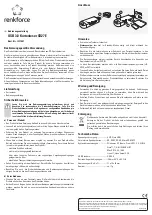
11. Power Management > Overview
93
PEB383 User Manual
July 25, 2011
Integrated Device Technology, Inc.
Confidential - NDA Required
11. Power
Management
Topics discussed include the following:
•
•
“Power Management Capabilities”
•
11.1
Overview
The PEB383 provides basic power management support to its PCI bus and PCIe link. PCI power
management states are mapped to specific PCIe link states. The bridge also supports Active State
Power Management (ASPM), where the device enters into power saving state and initiates exit when
needed. The PEB383 transmits power management messages during power management events.
The Power Management (PM) module connects with the Physical Layer sub block to transition the
Link State into low-power states when it receives a power state change request from a upstream
component, or when an internal event forces the link state entry into low-power states in ASPM. PCIe
link states are not visible directly to legacy bus driver software but are derived from the Power
Management state of the components residing on those links. Power saving increases as Link state
transitions from L0 through L3.
11.1.1
Features
•
Compliant with the
PCI Bus Power Management Interface Specification (Revision 1.2)
•
Supports the following PCI device power states:
— D0
— D3 hot
— D3 cold
•
Supports the following PCIe link power states:
— L0
— L0s
— L1
— L2/3 ready
— L3
















































